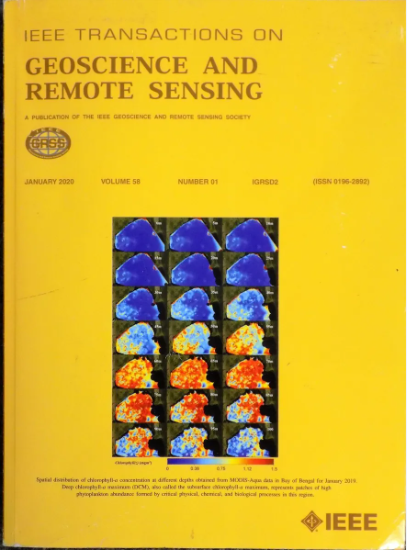SRCNet: Seminal Image Representation Collaborative Network for Oil Spill Segmentation in SAR Imagery
IF 7.5
1区 地球科学
Q1 ENGINEERING, ELECTRICAL & ELECTRONIC
IEEE Transactions on Geoscience and Remote Sensing
Pub Date : 2024-09-18
DOI:10.1109/TGRS.2024.3463404
引用次数: 0
Abstract
Effective oil spill segmentation in synthetic aperture radar (SAR) images is critical for marine oil pollution cleanup, and proper image representation contributes to effective learning for accurate oil spill segmentation. In this article, we propose an effective oil spill segmentation network named SRCNet, which is constructed by leveraging seminal SAR image representation to empower the learning capability of the proposed segmentation network for accurate oil spill segmentation. Specifically, the image representation utilized in our proposed SRCNet originates from SAR imagery, modeling with the internal characteristics of oil spill SAR image data, which therefore promotes effective learning for accurate oil spill segmentation in the training process. Besides, to conduct enhanced oil spill segmentation, we construct the proposed SRCNet with a pair of deep neural nets that work in a competition manner, where one neural net strives to produce accurate oil spill segmentation maps by drawing samples from the collaborated seminal image representation, while the other tries its best to distinguish between the produced and the true segmentations. It is the competition and the image representation collaborated that drives the proposed SRCNet to operate accurate oil spill segmentation efficiently with small amount of training data. This establishes an economical and efficient way for oil spill segmentation. Additionally, to further improve the segmentation performance of the proposed SRCNet, a regularization term that penalizes the segmentation loss is devised, which encourages the produced segmentation to approach the ground-truth segmentation, promoting the segmentation capability of the proposed SRCNet for accurate oil spill segmentation. Experimental evaluations from different metrics validate the effectiveness of the proposed SRCNet for oil spill segmentation.SRCNet:用于 SAR 图像中溢油分割的典型图像表征协作网络
在合成孔径雷达(SAR)图像中进行有效的溢油分割对于海洋石油污染清理至关重要,而正确的图像表示有助于有效学习溢油分割的准确性。在本文中,我们提出了一种名为 SRCNet 的有效溢油分割网络,该网络通过利用开创性的合成孔径雷达图像表示法来构建,以增强所提分割网络的学习能力,从而实现准确的溢油分割。具体来说,我们提出的 SRCNet 所使用的图像表示源自 SAR 图像,与溢油 SAR 图像数据的内部特征相吻合,因此在训练过程中可促进溢油精确分割的有效学习。此外,为了进行增强型溢油分割,我们用一对深度神经网络构建了所提出的 SRCNet,这对神经网络以竞争的方式工作,其中一个神经网络通过从合作的原始图像表征中提取样本来生成精确的溢油分割图,而另一个神经网络则尽力区分所生成的分割图和真实的分割图。正是竞争和协作图像表征推动了所提出的 SRCNet,使其能以少量的训练数据高效地进行精确的溢油分割。这为溢油分割提供了一种经济高效的方法。此外,为了进一步提高建议的 SRCNet 的分割性能,还设计了惩罚分割损失的正则化项,促使生成的分割接近地面实况分割,从而提高了建议的 SRCNet 在溢油精确分割方面的分割能力。不同指标的实验评估验证了所提出的 SRCNet 在溢油分割方面的有效性。
本文章由计算机程序翻译,如有差异,请以英文原文为准。
求助全文
约1分钟内获得全文
求助全文
来源期刊

IEEE Transactions on Geoscience and Remote Sensing
工程技术-地球化学与地球物理
CiteScore
11.50
自引率
28.00%
发文量
1912
审稿时长
4.0 months
期刊介绍:
IEEE Transactions on Geoscience and Remote Sensing (TGRS) is a monthly publication that focuses on the theory, concepts, and techniques of science and engineering as applied to sensing the land, oceans, atmosphere, and space; and the processing, interpretation, and dissemination of this information.
 求助内容:
求助内容: 应助结果提醒方式:
应助结果提醒方式:


